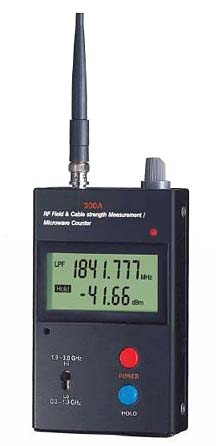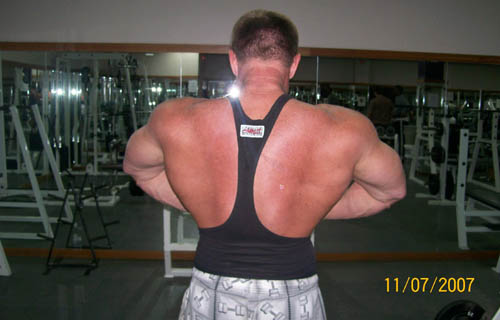Brandon Millay, Associate Professor of Electronics at Owensboro Community and Technical College, was indicted on federal steroid distribution charges on December 2, 2008. Millay’s involvement with the “steroid subculture” was well-known; he used his real name “bmillay” as his username on various steroid and bodybuilding forums and openly advertised the fact that he was a college professor with expertise in electronic and experience with military and law enforcement electronic devices (“Grand Jury Indicts Four Owensboro Men On Steroid Distribution Charges,” December 4).
The U.S. Attorney of Western Kentucky says Brandon Millay, 41; Kevin Revelette, 37; Keith Evans, 37; and Jimmie Garrison, 41, were all indicted on Wednesday on charges of conspiring to distribute anabolic steroids. The indictment alleges that the four men tried to distribute the steroids between October 2006 and April 2008.
Brandon Millay was the subject of a steroid bust on or about April 1, 2008. Rumors of Millay’s bust ensued shortly thereafter with speculation about the interrelationship between busts of steroid sources that were in close contact with Millay, such as CPT and Kong. Millay was the first to report the steroid bust involving Scott Haines of UGL Diamond Labs in Nashville, Tennessee. Millay’s proximity to several steroid bust made several members suspicious. Not surprisingly, it was alleged by several people on the forums that bmillay became a cooperating informant for federal and/or state investigators. Millay strongly denied these allegations (“anyone see Bmillay’s post on outlaw??,” April 27).
i have not and will not ever hurt anyone
please let it die
rumors are bad and things do not work like some of you think
yes i have had my share of troubles , but they are mine not yours , and sometimes things aren’t as bad as they seem
Brandon Millay posted prolificly on various forums sharing information about his own steroid use, recommendations on steroid cycling, and methods for thwarting law enforcement efforts targeted at steroid users.
In response to an article by steroid legal expert Rick Collins that suggested electronic signaling devices may be the “wave of the future” for steroid controlled deliveries, Brandon Millay suggested a method, drawing upon his electronics expertise, to thwart law enforcement officers attempting to make a controlled delivery.
Rick Collins described the use of electronic signaling devices by law enforcement in an article about controlled deliveries.
Given the headaches presented by savvy suspects, law enforcers are taking a new approach: wiring the package to signal when it’s opened. When someone opens a package, that’s good evidence that he’s the one who knowingly intended to possess it, right? It might even be stronger evidence than signing for it. The application for the search warrant will request authorization to execute the raid once the signal goes off. Several jurisdictions have begun using electronic signaling devices, typically AT-4’s, to confirm that a target has opened his package. No part of the device is visible unless the package is opened. It makes no audible sound but transmits an alert signal to a remote receiver manned by the agents. These devices are perfect in cases where a signature request might spook the target. An AT-4 can make the difference between a botched operation and a valid arrest and raid. Be aware that it’s likely the wave of the future.
Brandon Millay recommended the RF Wire/Wireless Field Strength Meter LPT-300A to detect the presence of AT-4’s used during a wired controlled delivery (“Re: Controlled deliveries,” January 16).
don’t open the box until you use a signal strength meter like this one I don’t know two things about the AT 4 device i need info on though: transmit frequency range and transmit output power approximately. i googled for a few minutes – couldnt find but i know that any device that transmits and is a commercial product has to have FCC approval – so if you have to dig that far there it is: http://www.elexp.com/tst_t300a.htm
Millay also used his electronics expertise to offer solutions for bodybuilders and steroid users when testing the quality of underground steroids. When San Rafael Chemical Services (SRCS), a popular company used by steroid users to analyze steroid samples, was raided and had their DEA license revoked, Millay suggested an alternative method of steroid lab analysis utilizing spectrophotometry (“Re: who needs srcs testing ? lol,” February 15).
as luck and nature would have it …..whenever a substance is bombarded with rf waves ….including light ……. it will give off a known and measurable amount of signal or additional signals ….. enter spectronomy ….when we prototyped different breath analyzers we would have a tube that the breath vapor would fill and then on one end we would inject infrared light through a lens ……then at the other end of the tube we would ….with the use of photodetectors tuned for the ir ……measure the attenuation and spectrum of the signal…..then use this to calculate through a microprocessor the breath alcohol content of the vapor in the tube ……..with me so far?…….well …. i also know that if you were to bombard a vial of research material in liquid
Brandon Millay was officially charged with conspiracy to distribute and possess with the intent to distribute anabolic steroids; operating an unregistered establishment with the intent to defraud and mislead; alteration of labeling of drug held for sale, after shipment in interstate commerce, with the intent to defraud and mislead; forfeiture.

About the author
Millard writes about anabolic steroids and performance enhancing drugs and their use and impact in sport and society. He discusses the medical and non-medical uses of anabolic-androgenic steroids while advocating a harm reduction approach to steroid education.


No replies yet
Loading new replies...
Join the full discussion at the MESO-Rx →